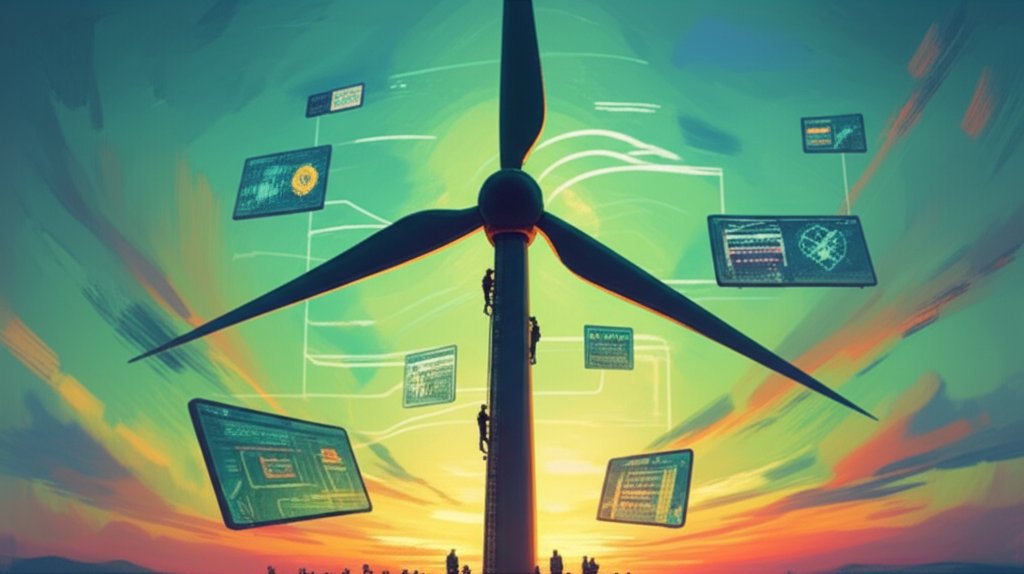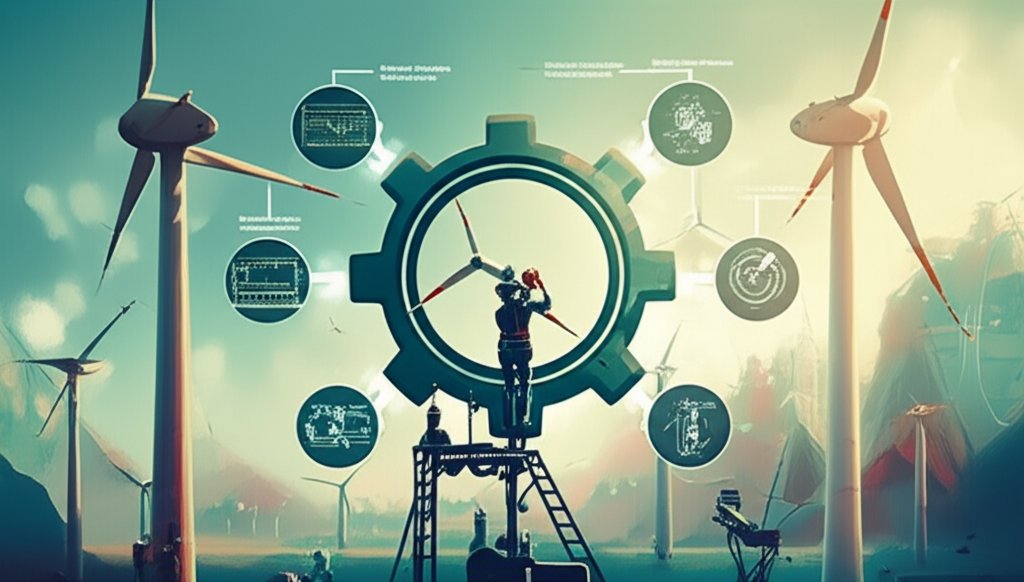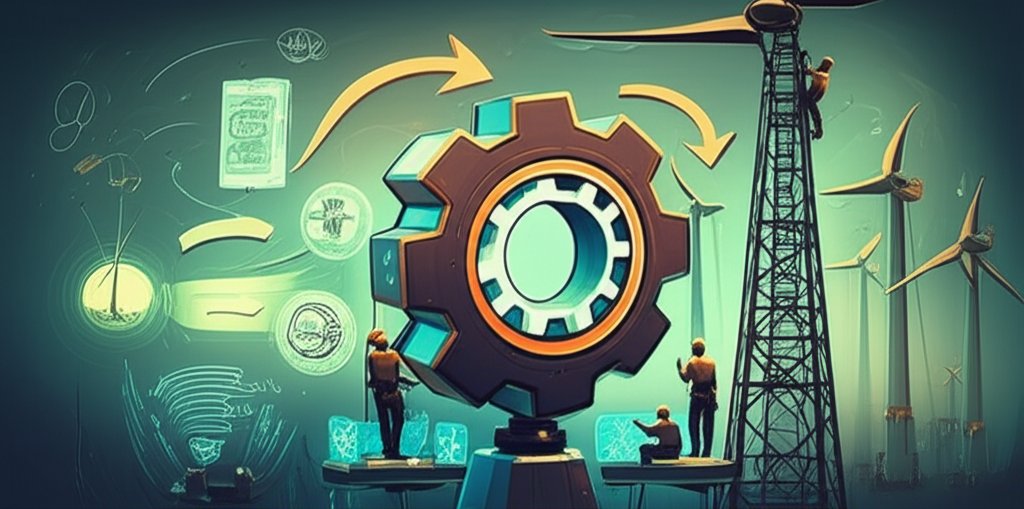Untuk gambaran yang lebih besar dan konteks penuh, pastikan Anda membaca panduan utama kami tentang Wind Turbine Parts: Guide to Essential Components and Their Functions.
markdown
Want a career that’s both challenging and vital for the future? Wind turbine technician training could be your ticket to a high-demand job in the renewable energy sector. The industry is rapidly expanding, and skilled technicians are needed to keep these massive machines running efficiently.
At a glance:
- Understand the core skills and knowledge gained in wind turbine technician training programs.
- Learn which certifications are most valuable in the wind energy industry.
- Explore different career paths and salary expectations for wind turbine technicians.
- Discover how to choose the right training program for your needs and goals.
- Get practical tips on breaking into the wind energy industry after completing your training.
Why Wind Turbine Technicians Are in Demand
Wind energy is a rapidly growing sector, with hundreds of thousands of large turbines producing power worldwide and roughly 60 GW added each year. This growth translates into a consistent and increasing demand for qualified wind turbine technicians. These technicians are responsible for the installation, maintenance, and repair of wind turbines, ensuring optimal performance and longevity. A 1.5 MW geared turbine’s nacelle weighs more than 4.5 tons, and wind turbines last a long time, with average lifespans beyond 25 years; this means regular inspections and repairs are crucial.
Core Skills You’ll Learn in Wind Turbine Technician Training
Wind turbine technician training programs are designed to equip you with the skills needed to thrive in this demanding field. These programs typically cover a range of topics, including:
- Safety Procedures: Working at heights and with high-voltage equipment requires strict adherence to safety protocols. Training emphasizes fall protection, lockout/tagout procedures, and electrical safety.
- Electrical Systems: Understanding the electrical components of a wind turbine is crucial for troubleshooting and repair. This includes knowledge of generators, transformers, and control systems.
- Mechanical Systems: Wind turbines are complex machines with numerous mechanical components, such as gearboxes, bearings, and hydraulic systems. Training covers the operation, maintenance, and repair of these components.
- Hydraulics: Many turbine systems, like the braking system, employ hydraulics. Understanding hydraulic systems is essential.
- Troubleshooting: Technicians must be able to diagnose and repair a wide range of problems, from minor glitches to major component failures.
- Climbing and Rescue: Working on wind turbines often involves climbing tall towers. Training includes climbing techniques, rescue procedures, and the use of specialized equipment.
- Blade Repair: Rotor blades capture wind energy, and often need repairs. Training covers the assessment and repair of blade damage.
Choosing the Right Wind Turbine Technician Training Program

Selecting the right training program is a crucial first step towards a successful career as a wind turbine technician. There are several factors to consider when making your decision:
- Accreditation: Look for programs that are accredited by reputable organizations, such as the Global Wind Organisation (GWO) or the North American Board of Certified Energy Practitioners (NABCEP). Accreditation ensures that the program meets industry standards and that your training will be recognized by employers.
- Curriculum: Review the curriculum to ensure that it covers the core skills and knowledge outlined above. The best programs offer a balance of classroom instruction and hands-on training.
- Instructors: Experienced instructors who have worked in the wind energy industry can provide valuable insights and practical guidance. Check the qualifications and experience of the instructors before enrolling in a program.
- Facilities and Equipment: Hands-on training is essential for developing the skills needed to work on wind turbines. Look for programs that have well-equipped training facilities and access to actual wind turbines.
- Location and Cost: Consider the location of the program and the cost of tuition, fees, and living expenses. There may be financial aid options available to help offset the cost of training.
Example: Some community colleges offer 2-year Associate of Applied Science (AAS) degrees in Wind Energy Technology. These programs often include internships with wind energy companies, providing valuable on-the-job experience.
Essential Certifications for Wind Turbine Technicians
While a degree or diploma provides a solid foundation, certain certifications demonstrate your competency and commitment to safety. Here are some of the most valuable certifications for wind turbine technicians:
- GWO Basic Safety Training (BST): This globally recognized certification covers essential safety topics, including first aid, fire awareness, working at heights, manual handling, and sea survival.
- GWO Basic Technical Training (BTT): This certification builds upon the BST and provides training in mechanical, electrical, and hydraulic systems.
- SPRAT/IRATA Rope Access Certification: This certification demonstrates your ability to safely access and work on wind turbines using rope access techniques.
- First Aid/CPR Certification: Essential for responding to emergencies on the job site.
- OSHA 10 or 30-Hour Construction Safety Training: Provides a general overview of construction safety principles and practices.
Career Paths and Salary Expectations

Wind turbine technician training opens doors to a variety of career paths in the wind energy industry. Some common roles include:
- Wind Turbine Technician: Installs, inspects, maintains, and repairs wind turbines.
- Service Technician: Specializes in the maintenance and repair of specific turbine components, such as gearboxes or blades.
- Field Service Engineer: Provides technical support and troubleshooting assistance to wind turbine technicians.
- Project Manager: Oversees the installation and commissioning of wind turbine projects.
- Wind Turbine Inspector: Evaluates the condition of wind turbines and identifies potential problems.
Salary expectations for wind turbine technicians vary depending on experience, education, certifications, and location. However, the median annual wage for wind turbine service technicians was $56,230 in May 2021, according to the U.S. Bureau of Labor Statistics. The top 10 percent earned more than $77,740.
Important note: Salaries can be higher in locations with a high concentration of wind farms or in specialized roles requiring advanced skills.
Breaking Into the Wind Energy Industry: A Practical Playbook
Landing your first job after completing wind turbine technician training requires a proactive approach. Here are some practical tips to help you break into the industry:
- Network: Attend industry events, join online forums, and connect with wind energy professionals on LinkedIn.
- Internships: Seek out internship opportunities with wind energy companies to gain valuable on-the-job experience.
- Resume: Tailor your resume to highlight your skills, certifications, and experience relevant to the wind energy industry.
- Cover Letter: Write a compelling cover letter that demonstrates your passion for wind energy and your qualifications for the position.
- Practice Interviewing: Prepare for common interview questions and practice your responses. Be ready to discuss your technical skills, safety knowledge, and problem-solving abilities.
- Be Persistent: Don’t get discouraged if you don’t land a job right away. Keep applying for positions and networking with industry professionals.
- Consider Relocation: Be willing to relocate to areas with a high concentration of wind farms, as this can increase your job opportunities.
To understand the context of how each of these parts functions, you can Learn about turbine parts.
Quick Answers: Common Questions About Wind Turbine Technician Training
- Q: Is wind turbine technician training physically demanding?
- A: Yes, the job involves climbing tall towers, working in various weather conditions, and lifting heavy equipment. Physical fitness is important.
- Q: What are the biggest safety risks for wind turbine technicians?
- A: Working at heights, electrical hazards, and exposure to extreme weather conditions are the primary safety risks. Proper training and adherence to safety protocols are essential.
- Q: What are the long-term career prospects for wind turbine technicians?
- A: The wind energy industry is expected to continue growing in the coming years, creating strong demand for qualified technicians. With experience and further training, technicians can advance to higher-level positions, such as service manager or project manager.
- Q: Do I need prior experience to enroll in a wind turbine technician training program?
- A: Some programs require a high school diploma or equivalent, but prior experience in electrical or mechanical fields is not always necessary. Many programs are designed to provide entry-level training for individuals with no prior experience.
Ready to Take the Next Step?
Wind turbine technician training is a rewarding career path for those who are passionate about renewable energy and enjoy working with their hands. By choosing the right training program, obtaining essential certifications, and networking with industry professionals, you can increase your chances of success in this growing field. The process from spinning blades to grid electricity represents the quickest way to use a clean, free, and accessible natural resource that meets our growing energy needs, and skilled technicians are vital to keeping that process efficient.
- How To Make Electricity At Home With Water Using DIY Micro-Hydro - December 7, 2025
- How to Generate Electricity from Water at Home for Off-Grid Power - December 6, 2025
- Small Scale Hydropower Brings Sustainable Energy to Rural Areas - December 5, 2025
















